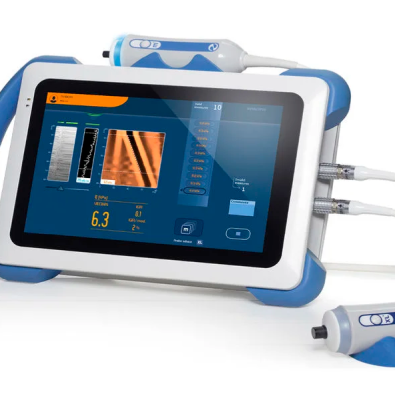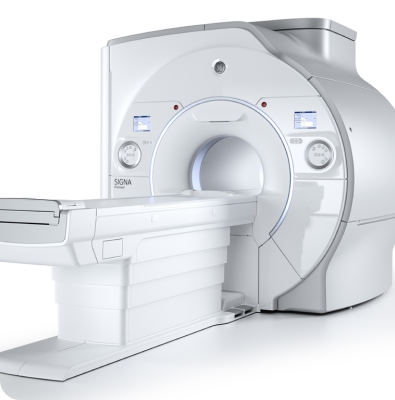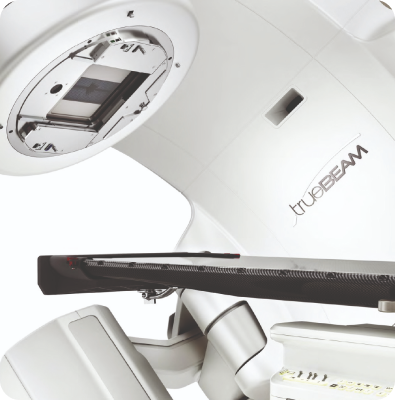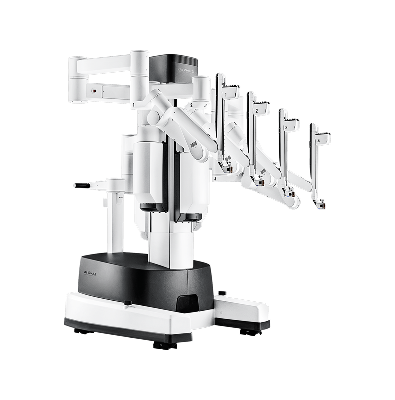The Gastroenterology Department of Güven Hospital provides preventive, diagnostic, and therapeutic services for diseases of the pancreas, liver, gallbladder, esophagus, stomach, small intestine, and large intestine.
In our Endoscopy Unit, digestive system diseases can be easily diagnosed using thin camera systems inserted through the mouth or rectum, and many conditions can also be treated during the same procedure. Routine procedures performed in our unit include gastroscopy, colonoscopy, rectosigmoidoscopy, ERCP, and capsule endoscopy.
What is Gastroenterology?
Gastroenterology is a subspecialty of Internal Medicine that focuses on the study, diagnosis, and treatment of diseases of the digestive system.
What Diseases Does the Gastroenterology Department Treat?
Diseases of the digestive system include conditions affecting the gastrointestinal tract — the esophagus, stomach, small intestine, large intestine, and anus — as well as organs outside the tract such as the liver, pancreas, and gallbladder/bile ducts. These diseases include gastroesophageal reflux disease (GERD), gastritis, gastric and duodenal ulcers, gallstones and polyps, hepatitis, cirrhosis, liver cancer, pancreatitis, celiac disease, Crohn’s disease, ulcerative colitis, other inflammatory bowel diseases, irritable bowel syndrome, diverticulosis coli, hemorrhoids, anal fissures, and cancers of the esophagus, stomach, pancreas, and intestines.
What Are the Areas of Practice in Gastroenterology?
Gastroenterologists are physicians who, after completing their internal medicine training, undertake an additional 3–4 years of theoretical and practical fellowship to specialize in digestive system diseases. They are trained and experienced in performing and interpreting procedures using advanced diagnostic and therapeutic technologies such as endoscopy, colonoscopy, ultrasonography, endoscopic retrograde cholangiopancreatography (ERCP), endoscopic ultrasonography (EUS), manometry, and capsule endoscopy.
What Are Gastrointestinal Tract Diseases?
Gastrointestinal tract diseases include gastroesophageal reflux disease (GERD), gastritis, gastric and duodenal ulcers, celiac disease, Crohn’s disease, ulcerative colitis, other inflammatory bowel diseases, irritable bowel syndrome, diverticulosis coli, hemorrhoids, anal fissures, and cancers of the esophagus, stomach, and intestines.
How Are Gastrointestinal Tract Diseases Diagnosed and Treated?
Diagnosis and treatment of gastrointestinal tract diseases involve a combination of patient history, physical examination, and non-invasive diagnostic tools such as laboratory testing, ultrasonography, contrast radiography, computed tomography (CT), and magnetic resonance imaging (MRI). In addition, interventional procedures such as endoscopy, colonoscopy, endoscopic ultrasonography, and ERCP are frequently used not only for diagnostic purposes but also for therapeutic interventions.
Examples of Therapeutic Endoscopic Procedures:
• Removal of polyps (benign tumors) to prevent cancer development
• Stopping bleeding by injecting hemostatic agents, cauterizing with laser, or using clips or bands
• Treating strictures with dilation techniques using balloons, bougies, or stents
• Treating hemorrhoids using band ligation or laser/chemical therapy
• Repairing perforations or tears caused by surgery or trauma using endoscopic sutures or stent placement
What Are Stomach Diseases?
Major stomach diseases include gastritis, peptic ulcers, reflux, polyps, and cancers.
How Are Stomach Diseases Diagnosed and Treated?
Diagnosis and treatment of stomach diseases involve laboratory testing, imaging techniques, endoscopy, and endoscopic ultrasonography. Helicobacter pylori infection, medication-induced or stress-related gastric complaints are common in our country and may increase the risk of serious conditions such as gastric cancer. Endoscopy plays a key role in the diagnosis and follow-up of these conditions. Treatment protocols implemented in accordance with the latest international guidelines are highly effective and successful.
What Are Small Intestine Diseases?
The small intestine, located immediately after the stomach, consists of the duodenum, jejunum, and ileum. Its main functions are digestion, hormone secretion, and protection against pathogens. Diseases affecting this region include ulcers, celiac disease, malabsorption syndromes, Crohn’s disease, food poisoning (acute gastroenteritis), and various cancers.
How Are Small Intestine Diseases Diagnosed and Treated?
Diagnosis and treatment involve laboratory tests, ultrasonography, contrast radiography, CT, MRI, and interventional procedures such as endoscopy, colonoscopy, endoscopic ultrasonography, ERCP, and capsule endoscopy. These procedures are used both for diagnosis and for therapeutic interventions.
What Are Colon Diseases?
The colon (large intestine) is the final part of the digestive tract, starting after the small intestine and ending at the anus. Its main functions are to support digestion, maintain the body’s water balance, and protect against infections. Diseases include inflammatory bowel diseases (ulcerative colitis and Crohn’s disease), irritable bowel syndrome, diverticulosis coli, acute infectious colitis (such as foodborne infections), polyps (benign tumors), and cancers.
How Are Colon Diseases Diagnosed and Treated?
Diagnosis and treatment involve laboratory testing, ultrasonography, CT, MRI, and interventional methods such as colonoscopy and endoscopic ultrasonography. These methods are used not only for diagnosis but also for treatment. Examples of therapeutic endoscopic procedures include:
• Removal of polyps to prevent cancer development
• Stopping gastrointestinal bleeding with medication injection, laser cauterization, clipping, or banding
• Dilation of strictures using balloons, bougies, or stents
• Hemorrhoid treatment via band ligation or laser/chemical methods
• Endoscopic suturing or stent placement for perforations or tears caused by surgery or other conditions
What Are Liver and Biliary Tract Diseases?
The liver plays essential roles in digestion, storage, detoxification, immune defense, and the synthesis of vital proteins and substances. When liver function is impaired, it can lead to life-threatening complications. However, the liver also has a remarkable ability to regenerate — for example, in living donor liver transplantation, up to two-thirds of the liver can regenerate within a month. Common liver diseases include acute and chronic hepatitis, jaundice, cirrhosis, liver cancer, benign cysts and tumors, and vascular obstructions.
Bile is produced by the liver and stored in the gallbladder, which releases it into the duodenum during digestion. Diseases of the biliary system include gallstones, gallbladder polyps, cholecystitis (gallbladder inflammation), cholangitis (bile duct infection causing jaundice), and biliary tract tumors.
How Are Liver and Biliary Tract Diseases Diagnosed and Treated?
Diagnosis and treatment involve laboratory testing, ultrasonography, CT, MRI, interventional radiological methods (such as percutaneous transhepatic cholangiography), and endoscopic procedures like EUS or ERCP. These techniques are used not only for diagnosis but also for therapeutic purposes. For instance, in patients with bile duct obstruction due to stones, endoscopic retrograde cholangiopancreatography (ERCP) can be performed under sedation to access the bile duct, remove the stones, and resolve jaundice without the need for surgery.
What Are Pancreatic Diseases?
The pancreas, located behind the stomach, plays a vital role in digestion by secreting enzymes and regulating glucose metabolism through hormones such as insulin. Common pancreatic diseases include acute and chronic pancreatitis, cysts, tumors, and cancers.
How Are Pancreatic Diseases Diagnosed and Treated?
Diagnosis and treatment involve laboratory testing, ultrasonography, CT, MRI, interventional radiology, and endoscopic procedures such as EUS and ERCP.
What Is Endoscopy?
Endoscopy is a diagnostic procedure that uses a thin, flexible tube with a light and camera to examine the esophagus, stomach, and small intestine. Thanks to advances in imaging technology, modern endoscopic systems provide detailed visualization and allow tissue sampling (biopsy). As the procedure is performed under sedation, it is both safe and comfortable for patients. By law, endoscopy procedures can only be performed by specialists in gastroenterology, gastroenterological surgery, pediatric surgery, or pediatric gastroenterology. A routine diagnostic endoscopy typically takes about 10 minutes and requires only 6–8 hours of fasting beforehand. In patients taking blood thinners, these medications may need to be stopped temporarily before the procedure. Endoscopy is the most reliable early diagnostic method for patients at high risk of developing cancer and is used for both diagnostic and therapeutic purposes.
Examples of Therapeutic Endoscopic Procedures:
• Removal of polyps to prevent cancer development
• Controlling bleeding by injection, laser coagulation, clipping, or banding
• Dilation of strictures using balloons, bougies, or stents
• Endoscopic treatment of hemorrhoids using band ligation or laser therapy
• Repairing surgical or traumatic perforations using endoscopic suturing or stenting
After the procedure, patients are monitored in a recovery unit and typically discharged the same day. The complication rate of endoscopy is less than 1 in 100,000, and most complications are mild and do not require hospitalization. Sedation-related complications occur in about 1 in 1,000 cases and are also generally mild.
Who Should Undergo Endoscopy?
Endoscopy should be performed in patients with chronic or “alarm” symptoms such as unexplained weight loss, nausea, bleeding, anemia, difficulty swallowing, or a family history of gastric cancer. It is also indicated for patients with persistent heartburn or indigestion unresponsive to medication, suspected celiac disease, cancer screening and follow-up, or other conditions that increase cancer risk. In many of these cases, alternative non-invasive methods are either ineffective or less reliable.
What Is Colonoscopy?
Colonoscopy is a diagnostic procedure that uses a flexible tube with a light and camera to examine the large and small intestines. With modern imaging technology, the internal structures can be visualized in detail, and tissue samples can be taken. The procedure is performed under sedation, making it safe and comfortable for patients. By law, colonoscopy can be performed by specialists in gastroenterology, gastroenterological surgery, pediatric surgery, or pediatric gastroenterology. A routine diagnostic colonoscopy typically lasts 20–30 minutes. Preparation includes a clear liquid diet for 1–2 days and bowel cleansing with medication the day before the procedure, along with 6–8 hours of fasting. Patients on blood thinners may need to stop them temporarily before the procedure.
Examples of Therapeutic Endoscopic Procedures:
• Removal of polyps to prevent cancer development
• Stopping bleeding by injection, laser coagulation, clipping, or banding
• Dilation of strictures using balloons, bougies, or stents
• Hemorrhoid treatment with band ligation or laser therapy
• Repair of perforations or tears using endoscopic sutures or stents
After the procedure, patients are observed in the recovery unit and typically discharged the same day. The risk of complications from colonoscopy is less than 1 in 10,000, and most are minor. Sedation-related complications occur in about 1 in 1,000 cases and are generally mild.
Who Should Undergo Colonoscopy?
Colonoscopy should be performed in patients with chronic or “alarm” symptoms such as unexplained weight loss, bleeding, anemia, or a family history of colon cancer or polyps. It is also recommended for patients with persistent changes in bowel habits, suspected inflammatory bowel disease, or for cancer screening and follow-up in high-risk individuals. According to World Health Organization and gastroenterology society guidelines, colonoscopy is the most effective method for early detection and prevention of colon cancer. For individuals with a family history of colon cancer, screening should begin at age 40 or five years earlier than the earliest case in the family, and be repeated every 5 years. For those without a family history, screening should begin at age 50 and be repeated every 10 years. Because the prevalence of benign colon polyps increases with age, regular colonoscopy screening plays a crucial preventive role. Polyps detected during the procedure are removed immediately, and follow-up intervals are determined based on their number, size, and type.







